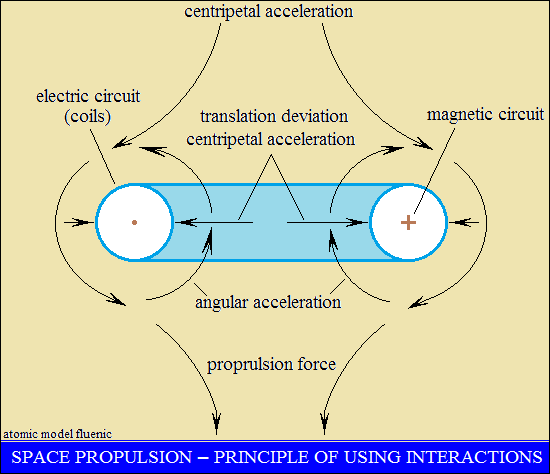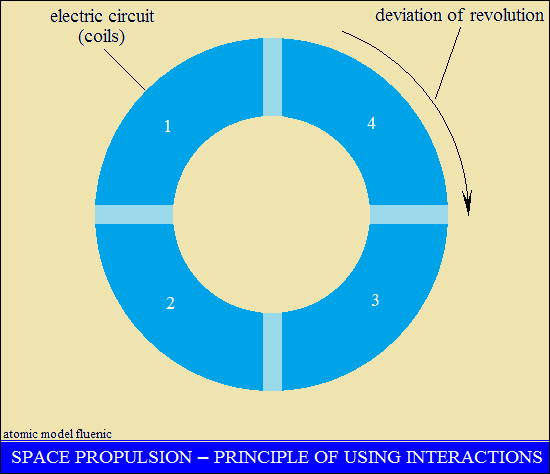Movement
of substance into vector space
Space as such, empty space is an abstract, non-existent concept.
What we perceive to be space are vectors interactions between stars.
Are the interactions remote at discovered by Faraday - a field of forces.
The same vector interactions were then called ether (light bearer).
centripetal acceleration and angular acceleration - gravity and vortex.
Interactions extend over astronomical distances - field of forces
(space)
Centripetal acceleration was perceived by Newton as an attraction force
and called gravity.
At that time the centripetal electromagnetic force was unknown.
The centripetal and angular acceleration propagates polarity orientation
in the substance,
generating the radial electrical potential, respectively the
electroide.
The centripetal and angular accelerations are interdependent.
The field of force generated by the star, through which it interacts
with the surrounding stars, is the vector space.
The centripetal and angular accelerations can not be shielded,
they can be deviated of transverse forces, generating orbital motion.
This phenomenon is demonstrated by the structure of the universe.
Propulsion in vector space
The deviation of centripetal force is the composition, the interaction
with the force field of the substance, in motion of linear or rotational.
The journey, the propulsion of a ship into the vector space is possible
logically,
using exactly the interactions of the space - centripetal and angular.
This procedure should be used both for the propulsion itself
and for selecting the optimum riemannian trajectory.
The centripetal acceleration is already in use.
The drawing proposes to research the principle of using the described
interactions.


